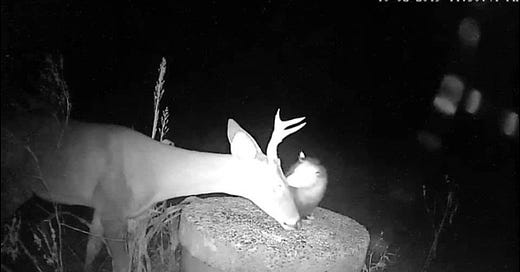Are Animals Moral?
Chapter 9.8: Crowdsourcing the reality that animals demonstrate proto-moral behavior
Note: This is an installment of The Freedom Scale: An Accurate Measure of Left and Right. See here for installments of The Distributed Nation: A Plan for Human Independence.
9.8:
More Than Just a Human Thing?
Even though we’re our own creatures in some sense, we also have to wrestle with our intrinsic nature. We know about the nature part of that, more and more. We know more about our neurocircuitry, for example—we know there’s a circuit for rage and there’s a circuit for fear and there’s a biological system for jealousy and there’s a system for altruism and there’s a circuit for play and there’s another one for pleasure. There’s a complex circuit for negative emotion—pain and anxiety and frustration and disappointment, guilt, and shame. We know that human beings share that motivational structure not only with all other human beings but certainly with all mammals and with almost all animals. And so that biological component of us is unbelievably deep…it’s tens of millions, hundreds of millions, and even billions of years old.
—Jordan Peterson1
When I first began this journey, I was of the belief that morality was exclusively a human thing—that animals are operating largely on instinct and programming. I am grateful to have had my mind changed on this subject.
Morality is mostly a human thing. As far as we can tell, we are the only ones using advanced cognition to develop sophisticated moral codes—codes we are then free to violate if we choose. Animals are operating on a far simpler level, and needless to say, the difference between our cognitive abilities and theirs is significant.
I’d heard stories here and there about animals demonstrating what appeared to be genuine emotion, analogous to our own. I mostly just set them aside as touching anomalies. I heard examples of animals engaging in altruistic behavior. Confirmation bias being what it is, I just chalked those up to reciprocal altruism—a basic biological survival program.
Then I heard the story of the whale that hid a scuba diver from a shark…
At first, the diver didn’t understand the whale’s behavior, and she was even a little frightened. Why would the whale keep moving so oddly—sticking close by, looking her straight in the eye, and even lifting her out of the water on its pectoral fin? Eventually, she realized that the whale had been protecting her from a nearby tiger shark.2
Whales also do this with seals—putting themselves in danger in order to protect another species. Whales are among the most intelligent species on the planet; it’s hard to believe that they are mistaking seals—or scuba divers!—for their own young, or even that they are simply engaging in programmatic behavior. Rather, it would appear that they’re trying to be nice.
Once I got over my human (and philosopher’s) bias that morality has to be the conscious result of complex cognition, I had a bit of a Grinch moment. What if morality, I thought, is not just for us to adore? What if morality—perhaps—means just a little bit more. What if the behaviors that lead to morality are actually manifested throughout the animal kingdom? Suddenly, I started noticing examples—and the science that backs them up—everywhere I looked.
Keep reading with a 7-day free trial
Subscribe to The Freedom Scale to keep reading this post and get 7 days of free access to the full post archives.



